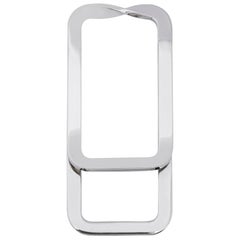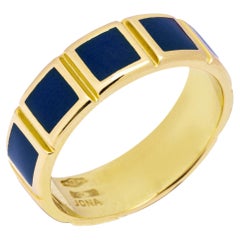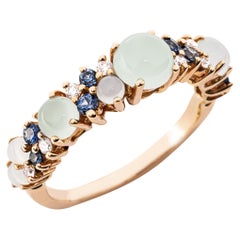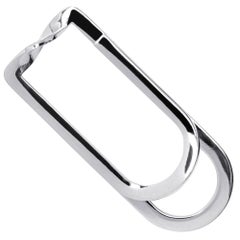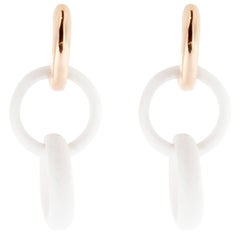Jona
Before he got into the jewelry business, Giorgio Jona worked on the stock exchange. His passion for antiques collecting led him to abandon the financial world in favor of trading antique art and gemstones for creating jewelry. When his son, Alex, joined the Italian jewelry purveyor that Giorgio had founded in 1961, the Jona brand began to offer elegant jewelry subdued enough for daily wear yet visually splendid and skillfully handcrafted using precious metals and stones.
Tucked in a 1690 baroque building on Torino’s Palazzo Balbo di Vinadio is a 3,000-square-foot showroom. This is the headquarters of Jona, home to luxury jewelry designs that are complex, yet often understated. For example, a slender pair of yellow tourmaline drop earrings set into 18-carat gold has a juxtaposition creating just the slightest contrast, which might be noticed only upon close inspection.
Vibrant precious stones collected from around the world are a common fixture in Jona jewelry, with stones like lapis lazuli shaped into eye-like cufflinks, sapphires caged in 14-carat-gold rings and quartz crystals stacked into modern beaded necklaces. Enamel is often arranged to create graphic, abstract patterns or cheekier winks, like miniature tennis balls on cufflinks. Even sparklier pieces, like diamond-encrusted earrings, bear an organic quality when arranged in the shape of a blooming daisy. An innovative spirit can also be found in Jona’s collaborations, such as the partnership with Italian architect and jewelry designer Tiziana Redavid that yielded radical bracelets and necklaces made with stainless-steel springs. The result is a brand whose modern shapes and precious stones ride the line between traditional elegance and modern daring.
Find a wide range of Jona jewelry on 1stDibs today.
| Average Sold Price |
| $348 |
| Related Creators |
2010s Italian Jona
Silver, Sterling Silver
21st Century and Contemporary Italian Jona
Tsavorite, 18k Gold, Yellow Gold
21st Century and Contemporary Italian Jona
Pink Sapphire, 18k Gold, Rose Gold
2010s Italian Jona
18k Gold, Yellow Gold, Enamel
21st Century and Contemporary Italian Jona
Diamond, Blue Sapphire, White Diamond, Chalcedony, Gold, Rose Gold, 18k ...
21st Century and Contemporary Italian Jona
Silver, Sterling Silver
21st Century and Contemporary Italian Jona
Silver, Sterling Silver
21st Century and Contemporary Italian Jona
Agate, 18k Gold, Rose Gold
Jona Sale Prices
| Sold Date | Sold Price | Category | Material | Creation Year | ||||||
|
| $348 |
Average sold price of items in the past 12 months |
| $289-$408 |
| Sold price range of items in the past 12 months |
